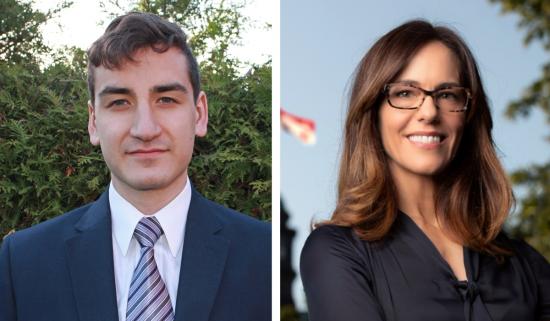
Cancer drugs costly for many Canadians, free for others
National pharmacare program offering universal prescription coverage for all Canadians could help decrease inequities for cancer patients
Prescription drug coverage is a major problem in Canada. Canadians not only pay significantly more for medication than consumers in many other developed countries but many inequities in access exist. One’s age, profession, health needs and province of residence often determine to what extent one qualifies for public drug coverage. This has devastating effects for life-threatening conditions such as cancer. In 2017, close to 200,000 Canadians were diagnosed with cancer and 80,000 died from it.
In a recent journal article, we outlined the inequities that Canadians face regarding the reimbursement of costs for their cancer drugs. These inequities exist both between different provinces and within the same province.
Cancer drugs are mainly administered through two routes: either orally, which can be done in the comfort of the patient’s home, or intravenously, which needs to be administered in a hospital by a health care professional. Because the Canada Health Act stipulates that all physician and hospital services must be publicly funded for the provinces to receive federal funding for health, intravenous cancer drugs are covered across all provinces.
For orally administered cancer drugs, the story is quite different. In Ontario, New Brunswick, Prince Edward Island, Nova Scotia and Newfoundland and Labrador, patients sometimes bear the responsibility for some or all of the costs, while in western Canada (British Columbia, Alberta, Saskatchewan and Manitoba) and in Quebec, oral cancer drugs are fully covered.
This creates inequities within a province.
For example, if two patients have the same type of cancer in a province where oral drugs are not covered, but one is prescribed an intravenous drug while the other is prescribed an oral drug, one will have out-of-pocket expenses that the other will simply not have.
Beyond inequities within the same province, inequities between different provinces also exist.
Firstly, there are differences in the number of available funded cancer drugs between provinces. This leads to situations where if a cancer drug has been approved for funding in one province but not the other, one patient will get it for free while the other patient in another province might have to remortgage their house in an effort to afford a drug that can cost anywhere from $1,800 to $132,000 per year.
Secondly, with oral cancer drugs being fully covered in western Canada and Quebec but not in other provinces, two patients requiring the same oral cancer drug in two different provinces will have very different experiences. While a patient in British Columbia will receive the oral drug for free, a patient in Ontario might incur significant expenses.
In June 2019, the Advisory Council on the Implementation of National Pharmacare issued its final report on universal drug coverage and recommended the establishment of pharmacare, a publicly funded insurance plan that would provide universal prescription medicine for all Canadians. It will be interesting to see how the upcoming federal election shapes the narrative around the implementation of this program as the federal political parties begin to unroll their campaign promises.
Pharmacare should be an election issue for all parties. Like medicare before it, pharmacare should be a cross-partisan commitment.
It is clear that severe inequities exist in cancer drug reimbursement programs in Canada. It is also clear that this significantly affects Canadians suffering from cancer and that these inequities need to be addressed, sooner rather than later.
 Mark Sorin is a student in the MD/PhD Program at McGill University. He holds a (H) B.Sc. in Pharmacology from McGill University. Amélie Quesnel-Vallée is the Canada Research Chair on Policies and Health Inequalities and Director of the Observatory on Health and Social Services Reforms at McGill University.
Mark Sorin is a student in the MD/PhD Program at McGill University. He holds a (H) B.Sc. in Pharmacology from McGill University. Amélie Quesnel-Vallée is the Canada Research Chair on Policies and Health Inequalities and Director of the Observatory on Health and Social Services Reforms at McGill University.








